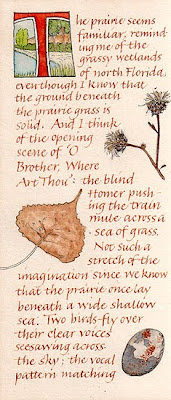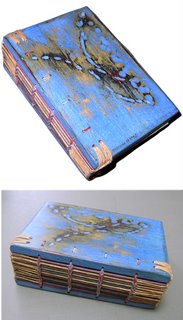 This weekend my sister and I went to Asheville to attend a workshop Dan Essig taught at BookWorks. Even though I’ve done a good deal of admittedly basic bookbinding, many of the tools and techniques were new to me.
This weekend my sister and I went to Asheville to attend a workshop Dan Essig taught at BookWorks. Even though I’ve done a good deal of admittedly basic bookbinding, many of the tools and techniques were new to me.
The first day, Friday, was mostly consumed with the making of a paper-only book with two-needle coptic binding; since I had only done single-needle coptic binding, this was new to me.
On Saturday we worked on the covers of our wooden coptic book. We started with 3/8″ blocks of wood, marking and drilling holes with a hand drill — I like the hand drill — and then beveling, cushioning and sanding the edges of the boards. We were shown several ways to distress the wood — wih a file, a ball-peen hammer, various wood tools, and more — and then we tried out different effects on our covers. A few coats of milk paint, some more sanding, waxing, and our boards were ready for prime time.
On Sunday we sewed our books using a 4-needle coptic stitch (with 2 stitch variations) and then sewing the endbands. We finished up by making a closure for our books. I chose to make one with a knob and leather strip. Making the little wooden knob was an interesting experience on the Dan’s Flexshaft grinder.
It was a interesting workshop in which I became acquainted with many tools and materials I’d never worked with before. Once I’ve sewn perhaps only 50 — or 500 — more books, I hope to have mastered the art of sewing these coptic books with even tension and beautifully laid knots and braids!
The photo shows the spine edge of my book just before it was sewn. I’ll post a picture of the finished book soon.
Like this:
Like Loading...
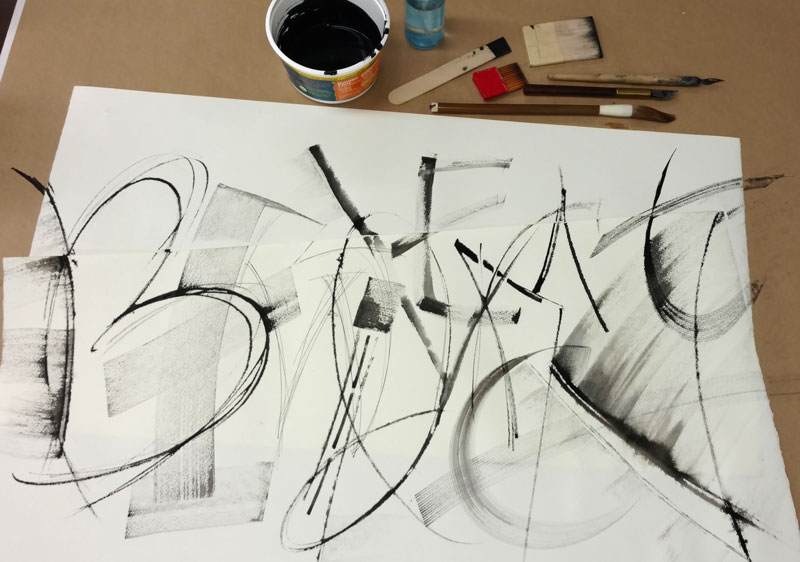
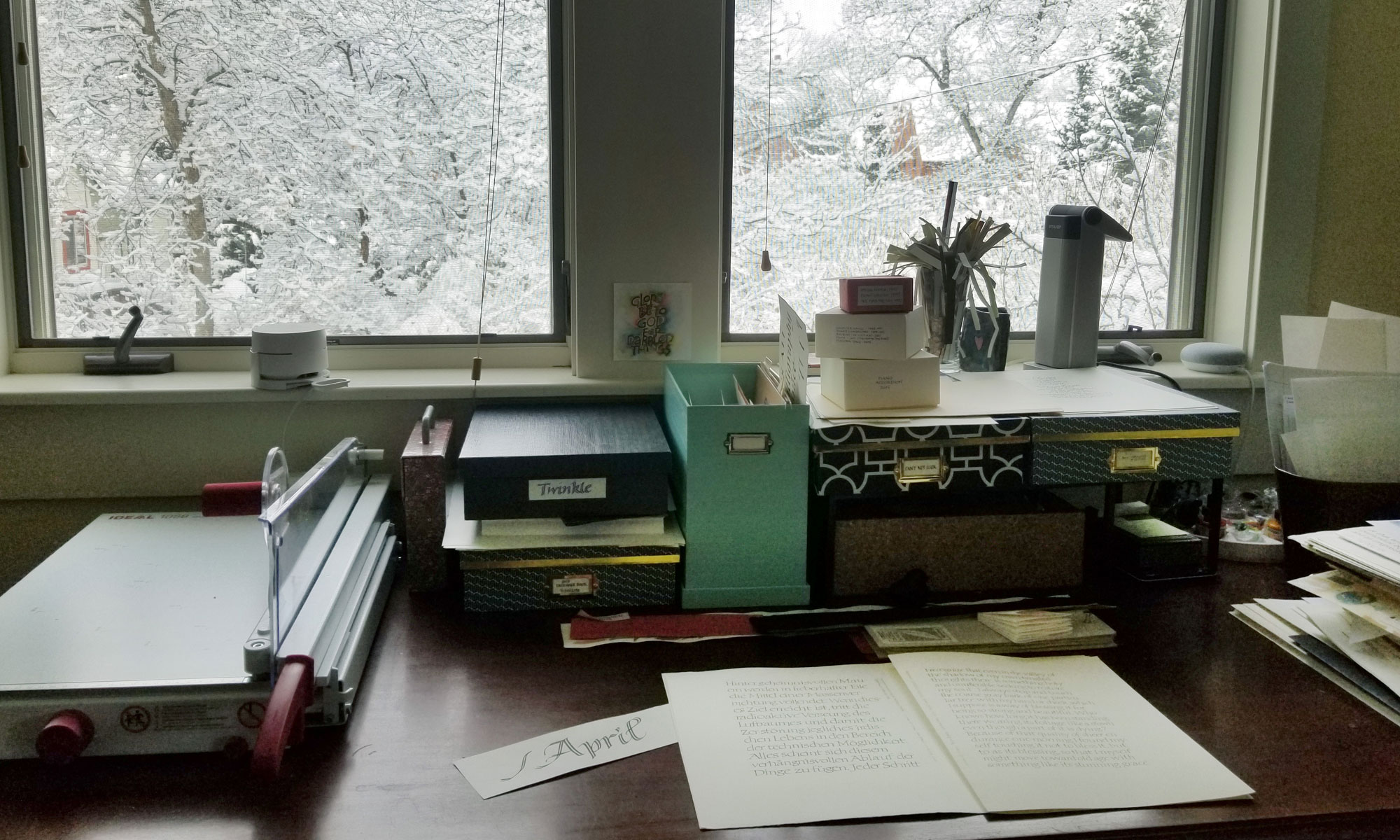

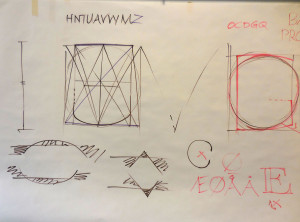 Just returned from an inspiring weekend at the Big Sky Scribes fall workshop taught by Christopher Haanes. The more I learn, the more I am surprised that English and German styles of calligraphy are not considered to be as disparate from one another as they each are from ornamental penmanship.
Just returned from an inspiring weekend at the Big Sky Scribes fall workshop taught by Christopher Haanes. The more I learn, the more I am surprised that English and German styles of calligraphy are not considered to be as disparate from one another as they each are from ornamental penmanship.
